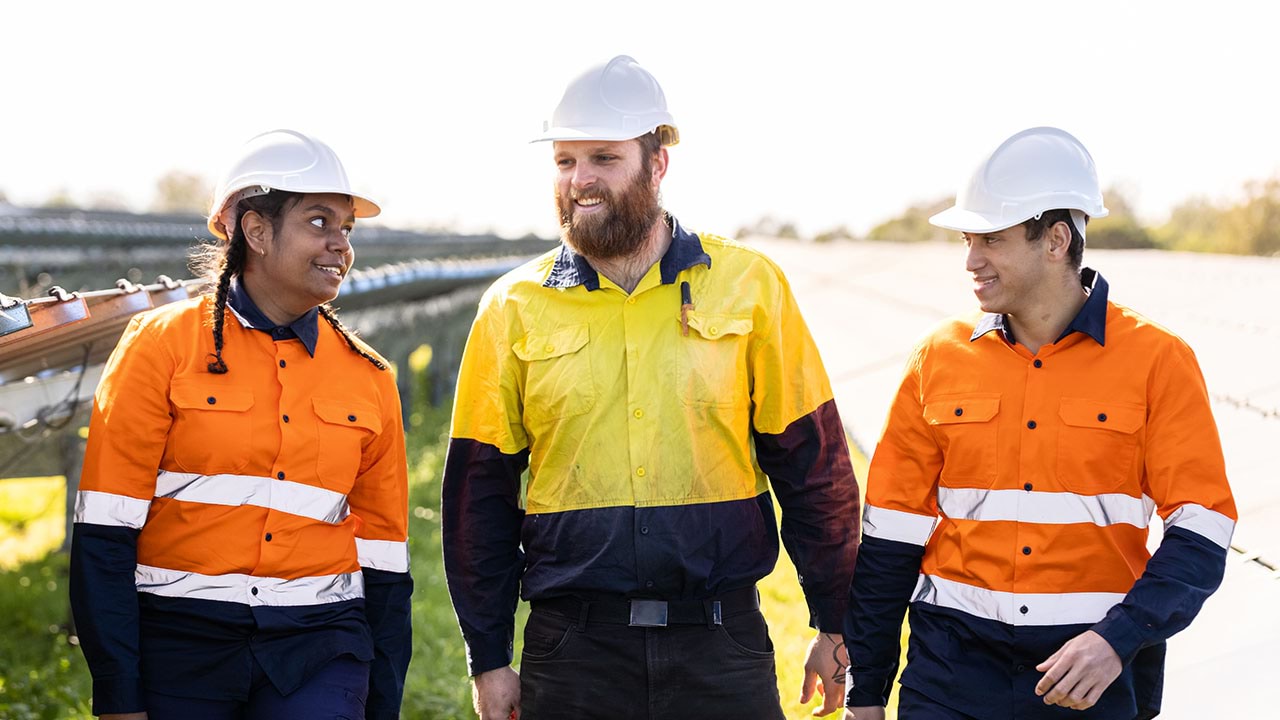The clean energy industry requires lots of workers who can assemble renewable energy components such as wind turbines, energy plants and other infrastructure.
Metal fitters and machinists fit and assemble fabricated metal parts into products. In Victoria, the need for skilled workers adept at using specialised machinery is going up.
Find out what a metal fitter and machinist does and the related Vocational Education and Training (VET) courses and pathways you can take to secure a job.
What is a metal fitter and machinist?
A metal fitter and machinist uses and maintains specialised production and textile machines.
In this role, you’ll need to know a lot about your machine and the products you’re making with it. You’ll need to understand the materials and different processes you can use. You may also perform basic repairs.
Find out more about metal fitters and machinists(opens in a new window) and these related jobs on the Victorian Skills Gateway:
- electronic equipment trades worker(opens in a new window)
- fitter and turner(opens in a new window)
- fitter (welder)(opens in a new window)
- mechanical engineering technician(opens in a new window)
- metal machinist (first class)(opens in a new window)
- production or plant engineer(opens in a new window)
- sheetmetal trades worker(opens in a new window).
Related training courses
Explore these related TAFE and training courses on the Victorian Skills Gateway(opens in a new window):
- engineering - fabrication(opens in a new window)
- engineering - mechanical trade(opens in a new window)
- engineering pathways(opens in a new window).
You may be eligible for government funding to help pay for your course.
Median salary
The median weekly earnings for metal fitters and machinists in Australia is $2,243.
Source: Jobs and Skills Australia(opens in a new window)
Note this salary is current as of January 2025 and is indicative only. A range of salaries apply to different roles across the industry.
Job demand in Victoria
Below are the employment projections for metal fitter and machinists jobs in Victoria. Figures show the number of workers in 2024 and the new workers expected to enter the workforce by 2027 and 2034.
‘New workers expected’ accounts for workers adding new jobs to the economy and replacing retirees over the next 3 and 10 years. These projections are estimates only. There will be additional jobs available as people move between jobs and industries.
| Region | Workers 2024 | New workers expected by 2027 | New workers expected by 2034 |
|---|---|---|---|
| Victoria | 20,293 | 1,899 | 7,341 |
| Melbourne – inner metropolitan | 724 | 100 | 337 |
| Melbourne – inner south-east metropolitan | 242 | 21 | 81 |
| Melbourne – southern metropolitan | 3,481 | 322 | 1,256 |
| Melbourne – northern metropolitan | 2,293 | 241 | 972 |
| Melbourne – eastern metropolitan | 2,309 | 190 | 756 |
| Melbourne – western metropolitan | 2,842 | 399 | 1,428 |
| Ballarat and surrounds (Central Highlands) | 823 | 89 | 274 |
| Bendigo, Echuca and surrounds (Loddon Campaspe) | 1,225 | 70 | 377 |
| Geelong, Colac and surrounds (Barwon) | 1,088 | 110 | 410 |
| Gippsland | 1,941 | 152 | 606 |
| Horsham and surrounds (Wimmera Southern Mallee) | 372 | 26 | 80 |
| Mildura, Swan Hill and surrounds (Mallee) | 625 | 41 | 129 |
| Shepparton, Seymour and surrounds (Goulburn) | 697 | 28 | 193 |
| Wangaratta, Wodonga and surrounds (Ovens Murray) | 912 | 57 | 265 |
| Warrnambool, Hamilton and surrounds (Great South Coast) | 720 | 54 | 178 |
Source: Victorian Skills Authority Employment Projections Dashboard
Resources to plan your next steps
Visit our clean energy industry profile to find out about:
- what it’s like to work in clean energy, and some of the jobs you could do
- training and skills to work in the industry, and financial assistance to help pay for your course
- help getting a job in clean energy, and industry job projections for Victoria
- other free resources and advice to plan your training and career.
Explore growing industries in your region
Updated



